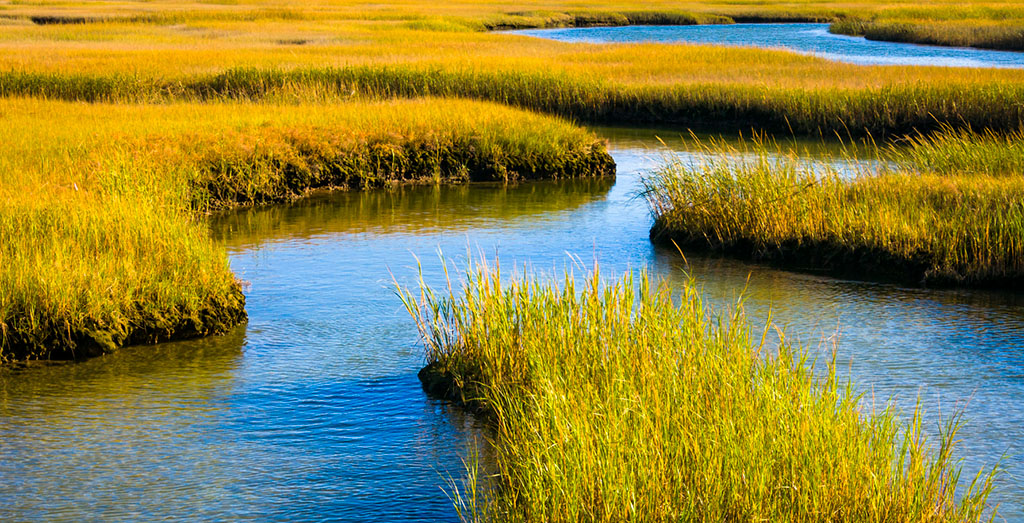A new study of marshes in the Chesapeake Bay has demonstrated that plant evolution must be accounted for to understand how global change affects coastal wetland ecosystems.
A team including researchers from the University of Tennessee, Knoxville, studied the grass-like sedge Schoenoplectus americanus, also known as chairmaker’s bulrush, to assess how the evolution of the plant’s root structure is affecting its ability to survive sea level rise, pollution, and other factors.
The team conducted a field experiment by resurrecting long-dormant seeds recovered from soil cores to reconstitute populations of Schoenoplectus originating from as far back as the late 19th century for comparison with those currently living in the area.
Chesapeake Bay, which stretches over 500 miles south from the Suffolk, Virginia, to the Otsego Lake headwaters near Cooperstown, New York, represents an important ecosystem for climate scientists to monitor as climate change continues to cause sea level rise and other effects.
The results, which were published in the journal Science, revealed that modern plants have evolved a rooting strategy that reduces the amount of carbon that is stored in marshes and reduces the capacity of marshes to keep pace with sea level rise. Modern plants do not root as deeply into the ground, meaning there is less structural stability, less carbon input and less elevation gain over time.
“The traits we measured were heritable; i.e., they are capable of evolving in response to a changing environment,” said Scott Emrich, associate professor of electrical engineering and computer science at UT and a member of the team. “The plants from seeds deposited around 1900 were more resilient to flooding than modern plants, which is not good news for modern marshes.”
“Our study shows how important it can be to account for rapid evolution in models designed to forecast the fate of high-value ecosystems like coastal marshes,” said Michael Blum, a professor of ecology and evolutionary biology at UT, who has been researching the issue for 20 years. “Further efforts to understand how coastal marsh plants may respond to future climate change can lead to better management of services like storm protection, removing carbon dioxide from the atmosphere, and fisheries production.”
The team noted that marshes are also susceptible to other pressures, including exposure to excess nutrients such as nitrogen and phosphorus from agriculture runoff that drains into the bay region.
Other collaborators are Megan Vahsen, a doctoral student at the University of Notre Dame, who led the study; Jim Holmquist and Patrick Megonigal of the Smithsonian Environmental Research Center; Jason McLachlan and Brady Stiller of the University of Notre Dame; and Kathe Todd-Brown of the University of Florida.
_
Media Contact: Kelsie Crittendon (865-974-0312, kelsiec@utk.edu)
